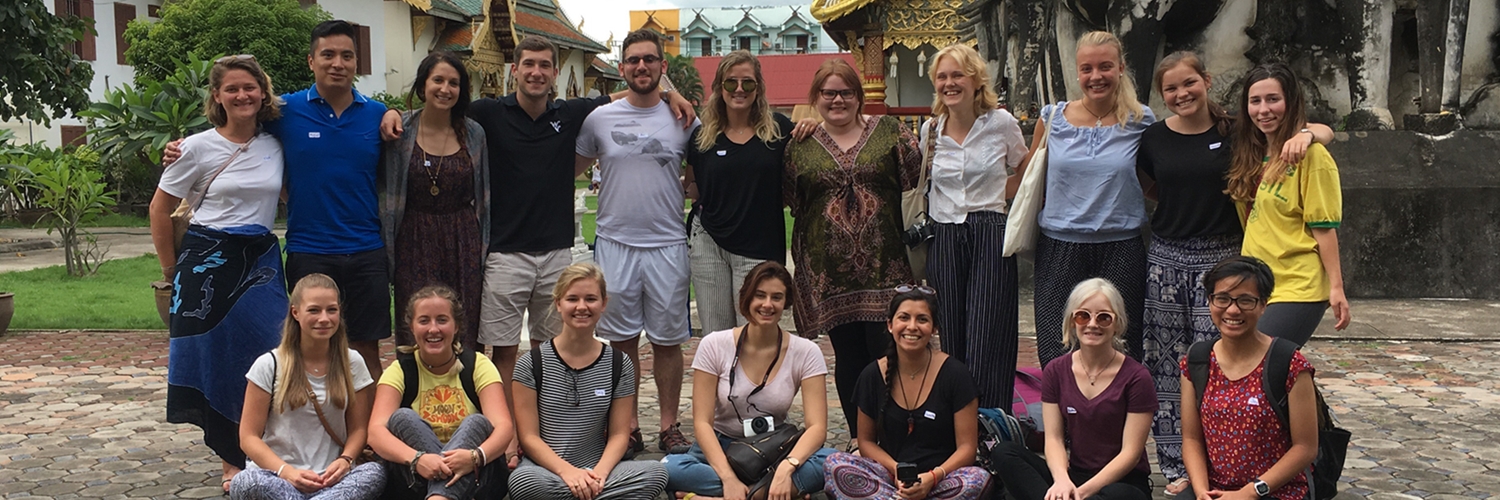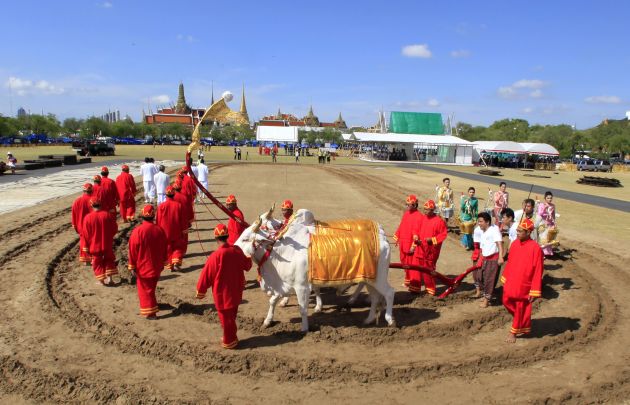Observed in early May, the exact date for the Royal Ploughing Ceremony in Thailand is determined by monks each year, and this year the ceremony will be held on Monday 14th May. The site is, as always, Sanam Luang, in front of the Grand Palace on Rattanakosin island, and the ceremony is expected to take place between 08.19 and 08.49, as is traditional. This fascinating ritual is both Buddhist and Hindu in origin and is performed at a similar time of the year in several other countries in this part of the world, including Cambodia and Burma.
The Royal Ploughing Ceremony is, as you would expect, closely tied to the agricultural industry in Thailand and is intended to mark the occasion of the start of the rice sowing season each year as well as to predict what sort of crop the farmers can expect. Observed for hundreds of years, the date of the ceremony was declared an official holiday in 1957 but this holiday is generally only observed by government departments, not by the private sector.
Attending the Ceremony
If you would like to witness the Royal Ploughing Ceremony for yourself, you should head to Sanam Luang early in the morning of 14th May. Any taxi or tuk tuk driver will know exactly where it is and you will not find it hard to locate even if you travel under your own steam; follow the crowds once you arrive in the general area and you cannot go wrong. There are actually two parts to the ceremony: a Buddhist blessing that takes place in the Grand Palace complex and a Hindu ritual which is the main event and takes place at Sanam Luang. This ritual starts with the king or appointed Lord of the Harvest leading the yoke and plough round the field three times, with the queen (or her appointed deputy) sowing seeds as they go. After the third circuit has been completed, the procession stops in front of a shrine, where Brahmins lead out sacred cows who are offered food and refreshments on seven silver trays.
The Royal Astrologers’ Predictions
The purpose of offering the sacred cows a variety of food and refreshments on the seven silver trays is to divine whether the forthcoming crop will be a good one or whether hardships can be expected this year in the agricultural communities that are spread across Thailand. On the trays will be food and drink such as rice, corn, beans, grass, sesame seeds, water and wine. Once the sacred cows have made their choice the royal astrologers will provide their interpretation: if cereal was the food of choice, the harvest is expected to be bountiful and if water is chosen, rainfall should be plentiful. The Lord of the Harvest also picks a piece of cloth from a bundle containing pieces of cloth of varying lengths and the length of the one that is chosen is used to predict the exact amount of rainfall expected during the growing season.
The Importance of Agriculture in Thailand and How We Support It
Although the agricultural industry is becoming less important as a contributor to Thailand’s GDP with each passing year, it still provides gainful employment to a large percentage of the population. Even for those who are not directly involved in the agricultural industry, learning how to grow rice and other crops can be very important, especially to those who live in rural parts of the country and these skills can literally make the difference between having sufficient food to eat throughout the year or starving.
Our Chiang Mai Women’s Empowerment Project includes a garden area where various crops are grown, not just to provide food for the single mothers who have taken sanctuary there but to equip them with the agricultural skills they will need should they decide to return to their rural homes in the future.
Playing Your Part in Our Agricultural Endeavors
If you would like your involvement with agriculture in Thailand to run a little deeper than simply observing the Royal Ploughing Ceremony at Sanam Luang, you can volunteer to work on our Women’s Empowerment Project in Chiang Mai, where you will have the opportunity to tend the crops that are grown on site and to learn more about rice farming and other agricultural practices in this part of the world. We place great emphasis on sustainable agriculture and try to make sure that the women we help are better equipped to provide for themselves once they leave to start new lives in the surrounding areas.









